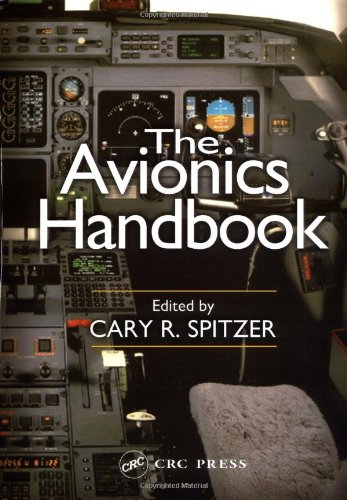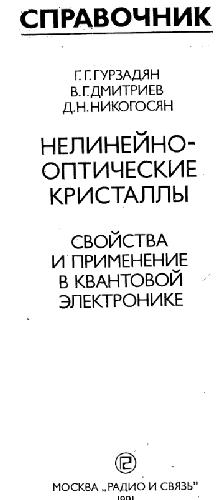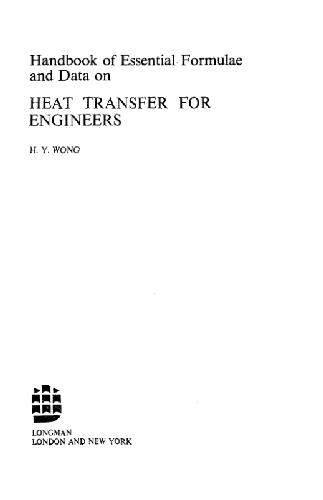Cary R. Spitzer, Cary Spitzer084938348X, 9780849383489
Table of contents :
toc……Page 1
The Avionics Handbook……Page 2
Preface……Page 6
Biography……Page 7
Contributors……Page 8
Contents……Page 10
CH-01……Page 13
1.1.1 Background……Page 16
Table of Contents……Page 0
Section I Elements……Page 14
1.2 The Standard……Page 18
1.2.1.1 Transmission Media……Page 19
1.2.1.2 Remote Terminal……Page 20
1.2.1.4 Bus Monitor……Page 22
1.2.1.5 Terminal Hardware……Page 23
1.3.1 Word Types……Page 24
1.3.1.3 Data Word……Page 25
1.3.1.4.2 Status Word Bits……Page 26
1.3.2 Message Formats, Validation, and Timing……Page 28
1.3.2.3.1 RT-RT Validation……Page 29
1.3.2.7 Illegal Commands……Page 30
1.3.3 Mode Codes……Page 31
1.3.3.2 Mode Code Functions……Page 32
1.3.3.3 Required Mode Codes……Page 35
1.4.1.1 Extended Subaddressing……Page 36
1.4.4 Variable Message Blocks……Page 37
1.4.7 Major and Minor Frame Timing……Page 38
1.5 Testing……Page 39
Further Information……Page 40
CH-02……Page 41
2.2 ARINC 419……Page 42
2.3.2 History……Page 43
2.3.3.3 Voltage Levels……Page 44
2.3.3.5.1 Transmitter External Fault Voltage……Page 45
2.3.3.7.1 Digital Language……Page 46
2.4.4 Source/Destination Identifier……Page 47
2.4.5 Sign/Status Matrix……Page 48
2.4.5.2 BNR Numeric Data Words……Page 49
2.4.5.3 Discrete Data Words……Page 50
2.5 Timing-Related Elements……Page 51
2.5.5 Timing Tolerances……Page 52
2.6.1.6 Bit-Oriented Protocol Determination……Page 53
2.6.2.1 Link Data Units (LDU)……Page 54
2.6.2.6 Protocol Words……Page 55
2.7.2 Evolution of Controls……Page 56
2.8 ARINC 453……Page 57
CH-03……Page 58
3.2 Bus Architecture……Page 59
3.3 Basic Bus Operation……Page 60
3.4 CSDB Bus Capacity……Page 61
3.7.1 Physical Integration……Page 62
3.7.3 Software Integration……Page 63
3.9 Bus Testing……Page 64
Defining Terms……Page 65
Bibliography……Page 66
CH-04……Page 68
4.2 HUD Fundamentals……Page 69
4.2.1 Optical Configurations……Page 71
4.2.1.2 Reflective Optical Systems……Page 72
4.2.2.1 Display Luminance and Contrast Ratio……Page 74
4.2.2.4 HUD Parallax Errors……Page 75
4.2.3 HUD Mechanical Installation……Page 76
4.2.4.1 HUD Overhead Unit……Page 77
4.2.4.2 HUD Combiner……Page 78
4.2.4.3 HUD Computer……Page 79
4.2.4.4 HUD Control Panel……Page 82
4.2.5 Aspects of HUD Certification……Page 83
4.3 Applications and Examples……Page 84
4.3.1.1 Primary Mode……Page 85
4.3.1.1.2 Primary Mode: Climb……Page 86
4.3.2 AIII Approach Mode……Page 87
4.3.2.2 Unusual Attitude……Page 88
4.3.3.1 Mode Selection……Page 89
4.3.4.1 Annunciations……Page 90
4.3.5.2 Display of Enhanced Vision Sensor Images……Page 91
References……Page 92
CH-05……Page 93
5.1 Introduction……Page 94
5.2 What Is an HMD?……Page 96
5.2.1 Image Sources for HMDs……Page 98
5.2.2 Optical Design……Page 100
5.2.3 Head Mounting……Page 102
5.3 The HMD as Part of the Visually Coupled System……Page 103
5.4.1 Ocularity……Page 106
5.4.2 Field of View and Resolution……Page 107
5.4.3 Luminance and Contrast in High Ambient Luminance Environments……Page 109
References……Page 111
CH-06……Page 115
6.1 Introduction……Page 116
6.2 An Example Avionic HMD Challenge……Page 117
6.4 Laser Advantages, Eye Safety……Page 118
6.6 Microvision’s Laser Scanning Concept……Page 119
6.6.2 Improving RSD Image Quality……Page 121
Defining Terms……Page 122
Further Information……Page 123
CH-07……Page 124
7.1.2 What Are NVG?……Page 125
7.1.3.4 1980s……Page 126
7.2.1 Theory of Operation……Page 127
7.2.2 Amplification of the Night Scene……Page 129
7.2.3 NVG Does Not Work without Compatible Lighting!……Page 130
7.3.1 Gen III and AN/AVS-6 ANVIS……Page 133
7.3.2 Gen II and AN/PVS-5 NVG……Page 134
7.3.3 Cat’s Eyes……Page 135
7.3.7 Low Profile NVG……Page 136
7.3.10 Lighting Design Considerations……Page 137
7.3.13 Measurement Equipment……Page 142
7.3.14 Nighttime Illumination — Moon Phases……Page 143
7.3.15 NVG in Civil Aviation……Page 144
References……Page 145
Further Information……Page 146
CH-08……Page 147
8.1 Introduction……Page 148
8.2 How Speech Recognition Works: A Simplistic View……Page 149
8.2.2 Vocabularies……Page 150
8.2.4 Methods of Error Reduction……Page 151
8.3 Recent Applications……Page 153
8.4.2 Communication Functions……Page 154
Defining Terms……Page 155
Bibliography……Page 156
Further Information……Page 157
CH-09……Page 158
9.1 Introduction……Page 159
9.2.1 Human Factors Engineering……Page 160
9.2.1.1 Usability……Page 161
9.2.2 Flight Deck Design……Page 162
9.2.2.1 Flight Deck Design Philosophy……Page 163
9.2.2.2 Pilot/Flight Deck Interfaces……Page 164
9.2.3 Evaluation……Page 168
9.3.1 Standardization……Page 169
9.3.2 Error Management……Page 171
9.3.3 Integration with Training/Qualification and Procedures……Page 172
References……Page 173
CH-10……Page 174
10.1 Introduction……Page 175
10.2.1 Battery Fundamentals……Page 176
10.3.1 Theory of Operation……Page 177
10.3.5 Charge Methods……Page 178
10.3.6 Temperature Effects and Limitations……Page 179
10.3.7 Service Life……Page 180
10.3.8 Storage Characteristics……Page 181
10.3.9 Maintenance Requirements……Page 182
10.4.1 Theory of Operation……Page 183
10.4.5 Charge Methods……Page 184
10.4.7 Service Life……Page 186
10.4.10 Failure Modes and Fault Detection……Page 188
10.5.1 Commercial Aircraft……Page 189
Defining Terms……Page 197
References……Page 202
Further Information……Page 203
CH-11……Page 204
SECTION II Functions……Page 205
11.1 Introduction……Page 207
11.2 System Overview……Page 208
11.4.1 Flight Deck Controls……Page 209
11.4.5 Electrical Power……Page 210
11.5.1 Fly-by-Wire Actuation……Page 211
11.6 Fault Tolerance……Page 213
11.8.1 Pitch Control……Page 215
11.8.2 Yaw Control……Page 216
11.8.5 Actuator Force-Fight Elimination……Page 217
11.10.2 Line Replaceable Units……Page 218
Defining Terms……Page 219
CH-12……Page 221
12.1 Introduction……Page 222
12.2 Fly-by-Wire Principles……Page 223
12.3.1.2 Dissimilarity……Page 226
12.3.1.4 Flight Control Laws……Page 227
12.3.1.5 Computer Architecture……Page 228
12.4.4 Latent Failures……Page 229
12.5.1 System……Page 230
12.6.1 Fly-by-Wire System Certification Background……Page 231
12.6.2.2 Software……Page 232
12.6.3.1 Design……Page 233
12.6.3.3 System validation……Page 234
12.7 Future Trends……Page 235
References……Page 236
CH-13……Page 237
13.1 Introduction……Page 238
13.3 Categories of Navigation……Page 239
13.4 Dead Reckoning……Page 240
13.5 Radio Navigation……Page 242
13.7 Map-Matching Navigation……Page 245
References……Page 246
Further Information……Page 247
CH-14……Page 248
14.1 Introduction……Page 249
14.2 Fundamentals……Page 250
14.3.1 Position and Velocity along a Line……Page 254
14.3.2 Position and Velocity in Three-Dimensional Space……Page 256
14.3.3 Position, Velocity, and Acceleration of a Tracked Object……Page 257
14.3.4 Position, Velocity, and Attitude in Three-Dimensional Space (INS Aiding)……Page 259
14.3.5 Individual GPS Measurements as Observables……Page 260
Further Information……Page 262
CH-15……Page 263
15.1 Introduction……Page 264
15.2 Fundamentals……Page 265
15.2.1 Navigation……Page 266
15.2.1.1 Navigation Performance……Page 267
15.2.1.2 Navigation Receiver Management……Page 268
15.2.2 Flight Planning……Page 269
15.2.2.1 Flight Plan Construction……Page 270
15.2.2.2 Lateral Flight Planning……Page 271
15.2.3 Trajectory Predictions……Page 272
15.2.3.1 Lateral Profile……Page 273
15.2.3.2 Vertical Profile……Page 274
15.2.3.3 Maneuver Types……Page 276
15.2.3.4 NDB Vertical Angles……Page 279
15.2.4.1 Speed Schedule Computation……Page 280
15.2.4.2 Maximum and Optimum Altitudes……Page 281
15.2.5.1 Lateral Guidance……Page 283
15.2.5.2 Vertical guidance……Page 285
15.3 Summary……Page 288
CH-16……Page 289
16.1 Introduction……Page 290
16.2 Background……Page 291
16.4 Concepts……Page 292
16.5 Challenges……Page 293
Defining Terms……Page 296
Further Information……Page 297
CH-17……Page 298
17.1 Enhanced Ground Proximity Warning System……Page 299
17.2 Fundamentals of Terrain Avoidance Warning……Page 300
17.3 Operating Modes……Page 301
17.3.1 Mode 1 — Excessive Descent Rate……Page 302
17.3.4 Mode 4 — Unsafe Terrain Clearance Based on Aircraft Configuration……Page 303
17.3.5 Mode 5 — Significant Descent Below the ILS Landing Glide Path Approach Aid……Page 304
17.3.6 Mode 6 — Miscellaneous Callouts and Advisories……Page 306
17.3.7 Mode 7 — Flight into Windshear Conditions……Page 307
17.3.9.1 Terrain Proximity Display……Page 308
17.4 EGPWS Standards……Page 309
Further Information……Page 310
CH-18……Page 311
18.2 Components……Page 312
18.3 Surveillance……Page 313
18.4 Protected Airspace……Page 315
18.5 Collision Avoidance Logic……Page 316
18.6 Cockpit Presentation……Page 317
CH-19……Page 321
SECTION III Requirements, Design Analysis, Validation, and Certification……Page 322
19.1 Requirements-Setting for Avionics Systems……Page 324
References……Page 326
CH-20……Page 327
20.1 Introduction……Page 328
20.2.2 Economic Perspective……Page 329
20.2.3 Design Perspective……Page 330
20.2.5 Requirements in the Trade Space……Page 331
20.2.7 Summary Comments……Page 332
20.3.1 Requirements Engineering……Page 333
20.3.2 Top-Down System Simulation……Page 334
20.3.3 TDSS Plan……Page 335
20.3.4 TDSS Process……Page 336
20.4.1 System Description……Page 338
20.4.2 Model Development……Page 340
20.4.4 Summary……Page 342
References……Page 343
Further Information……Page 344
CH-21……Page 345
21.1 Introduction……Page 346
21.2.1 Formal Specification……Page 347
21.3 Example Application……Page 348
21.3.1 English Specification of the Example System……Page 349
21.3.2 Formally Specifying the Example System……Page 350
21.3.2.2 State Description……Page 351
21.3.2.3 Formal Specification of Nextstate Function……Page 352
21.3.2.4 Specifying the att_cwsMode……Page 353
21.3.2.6 Specifying the fpa_sel Mode……Page 354
21.3.2.7 Specifying the alt_eng Mode……Page 355
21.3.2.8 Input to Displays……Page 357
21.3.2.9 Other Actions……Page 358
21.3.3 Formal Verification of the Example System……Page 359
21.3.4 Alternative Methods of Specifying Requirements……Page 361
21.4 Some Additional Observations……Page 362
Further Information……Page 363
CH-22……Page 365
22.1 Introduction……Page 366
22.2 Product Requirements and Constraints……Page 367
22.3 The Product Life Cycle Environment……Page 368
22.5 Parts Selection and Management……Page 369
22.5.1 Candidate Part and Part Manufacturer Selection……Page 370
22.5.3 Performance Assessment……Page 371
22.5.4 Reliability Assessment……Page 372
22.5.5.2 Routing Compatibility……Page 373
22.5.7 Risk Management……Page 374
22.6 Failure Modes and Mechanisms……Page 375
22.7.1 Protective Architectures……Page 377
22.7.3 Derating……Page 378
22.8 Qualification and Accelerated Testing……Page 379
22.8.2 Accelerated Testing……Page 380
22.9 Manufacturing Issues……Page 381
22.9.2 Manufacturability……Page 382
22.9.3 Process Verification Testing……Page 383
Defining Terms……Page 384
References……Page 385
Further Information……Page 386
CH-23……Page 387
23.1 Introduction……Page 388
23.2 Regulatory Basis of the Federal Aviation Administration……Page 389
23.3.1 Technical Standard Order……Page 390
23.3.2 Supplemental Type Certificate……Page 391
23.3.3 Type Certificate, Amended Type Certificate, and Service Bulletin……Page 393
23.5 System Requirements……Page 394
23.6 Safety Assessment……Page 395
23.8 Software Assurance……Page 397
23.10 The Joint Aviation Authorities……Page 399
Further Information……Page 400
CH-24……Page 401
24.1 Introduction……Page 402
24.4 Heritage of EIA 632……Page 403
24.5.5 Product Realization Processes……Page 404
24.6 Project Context……Page 405
24.7.1 The System and Its Products……Page 406
24.7.2 Building Block Framework……Page 409
24.7.4 Relationship Between the Building Blocks and the Processes……Page 410
24.7.5 Hierarchy of Building Blocks……Page 412
24.7.6 Requirements……Page 413
24.7.7 Functional, Performance, and Interface Requirements……Page 417
Defining Terms……Page 418
Further Information……Page 419
CH-25……Page 420
25.1 Introduction……Page 421
25.2.1 Soft Faults……Page 422
25.2.2 MTBUR/MTBF……Page 423
25.3 Civil Airworthiness Authority Concerns……Page 424
25.3.1 EME Compliance Demonstration for Electrical/Electronic Systems……Page 425
25.3.2 EME Energy Propagation……Page 426
25.4 Architecture Options for Fault Mitigation……Page 431
25.4.1 Electrical/Electronic System……Page 432
25.4.2 Digital Computing Platform……Page 433
Defining Terms……Page 434
References……Page 435
CH-26……Page 436
SECTION IV Software……Page 437
26.1 Introduction……Page 439
26.1.2 Abstraction and Freedom……Page 440
26.2 Key Concepts……Page 442
26.2.1 Overall Structure……Page 443
26.2.2 Errors and Exceptions……Page 447
26.2.3 Scalar Type Model……Page 448
26.2.4 Arrays and Records……Page 449
26.2.6 Error Detection……Page 452
26.3 Abstraction……Page 454
26.3.1 Objects and Inheritance……Page 456
26.3.2 Classes and Polymorphism……Page 459
26.3.3 Genericity……Page 463
26.3.4 Object Oriented Terminology……Page 464
26.3.5 Tasking……Page 465
26.4 Programs and Libraries……Page 468
26.4.1 Input-Output……Page 469
26.4.2 Numeric Library……Page 471
26.4.3 Running a Program……Page 472
References……Page 475
Further Information……Page 476
CH-27……Page 477
27.1 Introduction……Page 478
27.1.2 Document Overview……Page 479
27.1.3 Software as Part of the System……Page 481
27.2.1 Software Planning Process……Page 482
27.3.1 Software Verification……Page 483
27.3.4 Certification Liaison Process……Page 485
27.4.1 Previously Developed Software……Page 486
References……Page 487
Further Information……Page 488
CH-28……Page 489
SECTION V Implementation……Page 490
28.1 Introduction……Page 492
28.1.1 Motivation……Page 493
28.1.2 Definitional Framework……Page 494
28.1.3 Dependability……Page 497
28.1.4 Fault Tolerance Options……Page 498
28.1.6 Design Approach……Page 499
28.2.1 General Mechanization……Page 500
28.2.2 Redundancy Options……Page 501
28.2.3.1 Fault Masking……Page 502
28.2.3.3 Hybrid Fault Tolerance……Page 503
28.2.3.4 Hybrid Fault Tolerance……Page 504
28.2.5 System Self Tests……Page 505
28.3.1 Voter Comparators……Page 506
28.4.1 Error Detection……Page 507
28.4.1.3 Reversal Check (Analytical Redundancy)……Page 508
28.4.3 Error Recovery……Page 509
28.5.1 Multiversion Software……Page 510
28.5.3 Trade-Offs……Page 511
28.6.3 Validation……Page 512
References……Page 513
Further Information……Page 514
CH-29……Page 515
29.2 Background……Page 516
29.4 Cabinet Architecture Overview……Page 518
29.6 Maintenance……Page 521
References……Page 522
Further Information……Page 523
CH-30……Page 524
30.1 Overview……Page 525
30.5 User Involvement……Page 526
30.8 Navigation……Page 527
30.11 Communications……Page 528
30.12 Flexibility and In-Service Updates……Page 529
30.14 Support Environment……Page 530
The Avionics Handbook……Page 531
32.2 IAS Hierarchical Functional Design……Page 532
32.3 Integrated Avionics Architecture……Page 534
32.3.1.1 CIP LRM Types……Page 536
32.3.1.2 CIP Buses……Page 537
32.3.1.3 CIP Software……Page 538
32.3.3 Communication, Navigation, Identification (CNI)……Page 539
32.3.4 Electronic Warfare (EW)……Page 540
32.3.6 Inertial Reference System (IRS)……Page 541
32.5 Summary……Page 542







Reviews
There are no reviews yet.